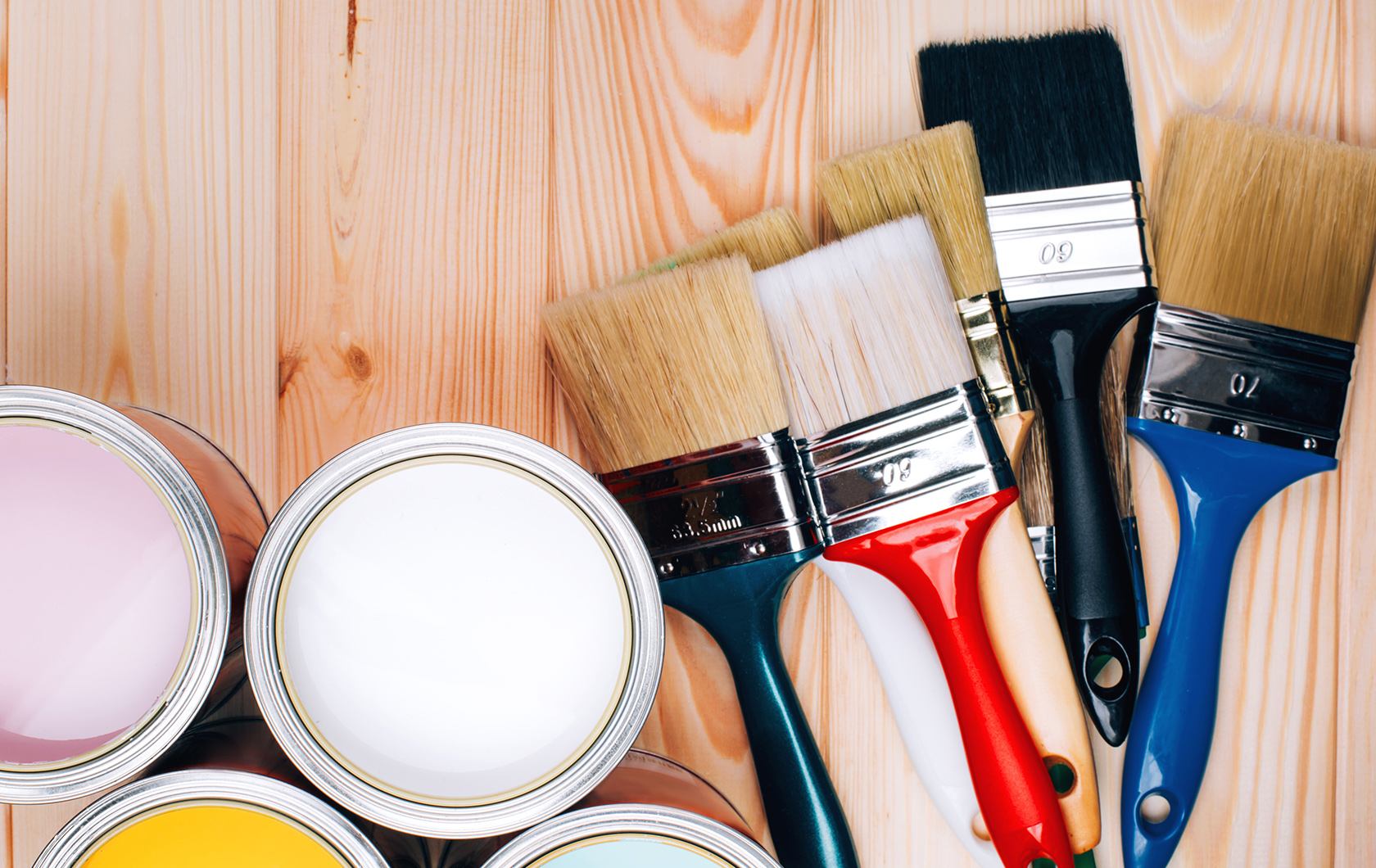
How much should I spend on a Paint Brush?
With most products, you get what you pay for; this is certainly the case with a paint brush.
For example quality Purdy paint brushes have longer lasting bristle and can hold more paint within their bristle or filaments - this reduces the user time spent reloading the brush.
The handle should be comfortable to hold and work with for long periods of time.
Hamilton paint brushes are more robust, allowing for longevity – promoted on Trade 1st website. A well maintained paint brush can last a professional, with daily use, up to 3 years!
Is Synthetic Filament or Natural Bristle better?
Natural bristle paint brushes are made with animal hair. Pig/Hog hair is regarded as best within the industry. Professionals, who prefer natural bristle paint brushes, like them because they allow the user to use the brush for different types of work at different stages of the brushes life.
Synthetic filament is nylon, polyester or a combination of both, and can last up to five times longer than natural bristle.
The performance with paints is comparable but requires a slightly different brushing technique.
Ideally, you should use a combination of both depending on the work required.
How do I select the correct size brush?
Size is important, larger 3 & 4 inch brushes are ideal for large area coverage, and smaller 2 inch brushes or less are ideal for trim work and cutting in around corners.
Brushes commonly come with either a Kaiser or Beaver Tail style handle, Kaiser is generally preferred for detail painting and Beaver Tails suits users with larger hands.
How do I select a Specialist Use Paint Brush?
There are many different types of paint brushes – they allow for different applications. The correct selection will improve the final result and can dramatically reduce the time spent decorating.
Sash paint brushes are long handled and get their name from painting sash windows. However the larger sizes are perfect for cutting in, whilst the smaller sizes are excellent for detail painting.
Fitch paint brushes are divided into three areas main areas; Round, Flat and Slant. Their common characteristic is that they all have long artist paint brush handles and are narrow in width. They are widely used in areas that require a high degree of accuracy, such as painting coving or window trims or frames.
Striker paint brushes are sometimes called industrial brushes. These brushes are ideally suited in hard to reach areas where detail is not critical. They are ideal for painting roofs, garden fences and lamp posts.
Varnish, Masonry, Angled brushes have been manufactured for use with a specific application. Varnish for the application of varnishes. Masonry for the painting of rough internal and external abrasive masonry surfaces and Angled paint brushes for hard to reach areas.
Block paint brushes have a thicker stock which allows these brushes to hold more paint or treatment, and have wide internal and external applications
Wall paint brushes are popular as a standard brush for painting large areas. These can also be used for paste.
What should I look out for when buying paint brushes?
Cheap paint brushes normally mean poor quality and poor performance.
You will save money on the brushes but the application will take longer and the brush will need replacing sooner.
Bristle loss can be a major headache whilst decorating. This normally occurs with cheap paint brushes.
Plastic or rubber handles can become floppy when placed within a Brush mate Vapour box.
Certain paints primarily industrial or oil based exterior paints can make your brush difficult to clean; don’t use your best brushes to apply these paints!
What should I be looking for?
The basic elements of a high quality paint brush are materials and craftsmanship.
The materials that make up a brush include - the brush bristle or filament material, whether natural bristle or synthetic, the ferrule and the handle.
Quality natural bristle paint brushes have longer bristles and a divider inside to provide a paint reservoir, which increases the amount of paint they hold.
The ends of the natural bristles are flagged or split at the tips, this allows greater paint pick up.
They have tapered chisel shaped ends which means there have shorter bristles on the outside and longer bristles in the centre. This means the paint will go on smoother and more evenly.
Natural bristle generally comes from Chinese pigs, the softness or stiffness will depend on the climate the pig encountered during its life.
A top-quality brush will not shed bristles like a cheap paint brush, because the bristles are seated firmly in the pinned rust resistant ferrule.
Wooden handles are preferred by most professionals. Hardwood handles minimise the absorption of coatings or if left over night in water and reduce potential expansion of the wooden handle.
Lighter handles are preferred as they increase brush control and minimise hand aches or fatigue.
